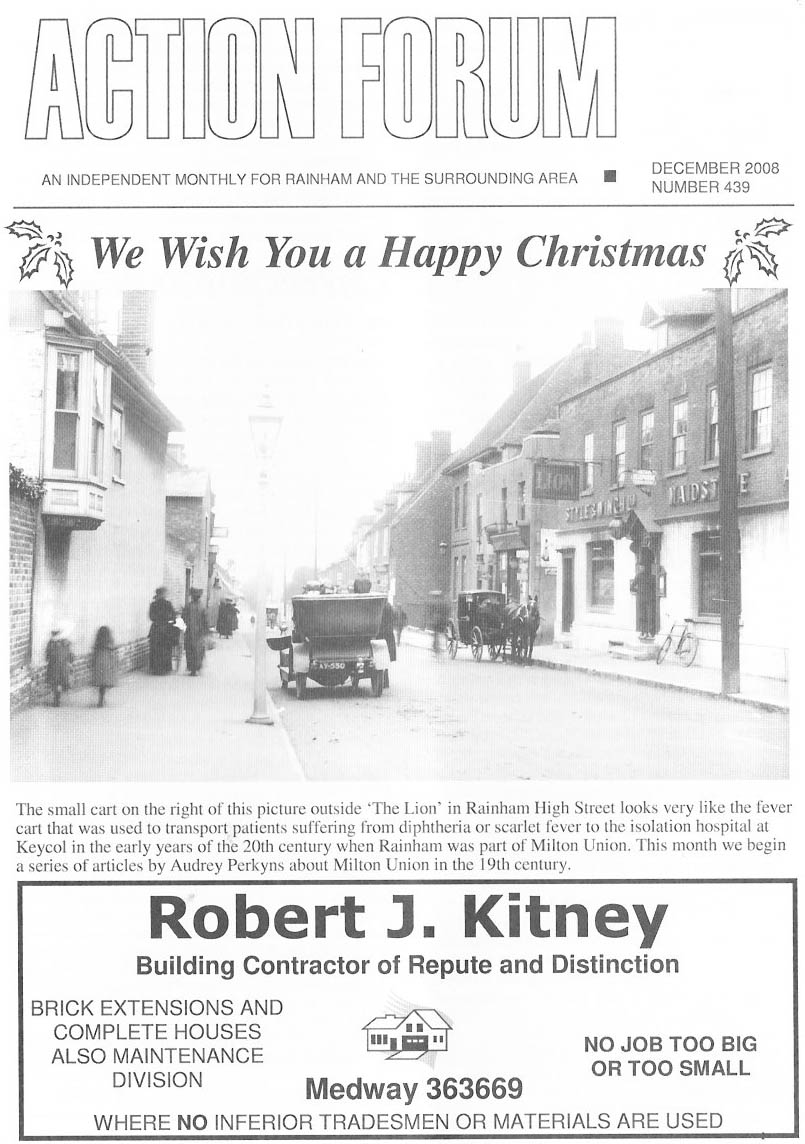NINETEENTH CENTURY RAINHAM
Titbits from Milton Union records by Audrey Perkyns
In the 1860s and 1870s the public health movement developed, partly as a result of the scientific discovery of the causes of disease. Smallpox vaccination was the first sign of this. Fresh water and sewerage systems came to urban areas first. The isolation of those with infectious or contagious diseases became important, and from the 1870s the Milton Union had adapted a part of the workhouse premises as an isolation hospital. Inspectors of Nuisances (later Sanitary Inspectors) were the first public health officers to be appointed, followed by Medical Officers of Health (MOHs). In the Milton Rural Sanitary Authority (unfortunately this gives the acronym MRSA!) the MOH and the Guardians were keen to persuade the government to make notification of infectious diseases compulsory, as one episode illustrates.

In early 1876 there was a serious epidemic of scarlet fever in Rainham and Upchurch. The MOH was angry because Dr Penfold was not willing to notify cases occuring among patients who were not paupers, nor even to forbid their attendance at school. The problem was the association of the new Sanitary Authorities with pauperism because as new government responsibilities developed (registration, then vaccination, then public health), the obvious authorities to administer them were the ones already there - the Poor Law guardians. The stigma of pauperism was felt keenly. Anyone needing attention from the Poor Law MO was automatically pauperised, and lists of people receiving Poor Law benefits were published on the church doors. The government had to insist that this should not apply to vaccination, because it wanted to encourage it. Many doctors were not prepared to let their private patients be tainted by association with pauperism, and Dr Penfold was one among many who refused to cooperate to notify infectious cases to the MOH.
In support of his appeal for compulsory notification, the MOH, Dr Ray, wrote to the Local Government Board in 1876 that the infection had been controlled in parts of the Union where notification and isolation had occurred, but not in Dr Penfold's area. 'I have just returned from a spectacle, which ought to be impossible in any civil ized country, and more especially one in which legislation has recently turned to sanitary improvements.
In the house of one Edward Hart, a laborer residing in Station Road Rainham, a death has recently occurred from scarlet fever; the body, four days a corpse, and still unburied, was, as expressed by a neighbour, already turning black from the Virulence of the disease; a child running about the house and absolutely appearing at the front door was full out with the rash, which symptomises the malady. Other children who had not had the disorder, were freely mixing with the infected child. The mother and father of the youngster, full as they must be of the morbid poison, were going about their respective avocations, and were not to be seen. A neighbour, who showed us over this fever poisoned den, was going in and out of her neighbour's house. The neighbours themselves, seeing no fear, were mixing freely with the infected children. This in simply monstrous'

